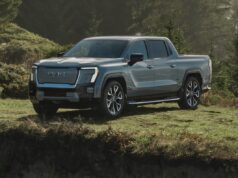With all the attention being focused on electric cars, like the Tesla Model S and Chevy Bolt, plug-in hybrids and especially regular hybrid models have had to take a back seat. But what if you aren’t quite ready to make the jump to an electric car – fully electric or plug-in hybrid, but would still like to drive something a bit “greener” than the average car? Although hybrids don’t the attention they did 10 years ago, there are still plenty of good options.

Kia continues to expand its electrified lineup, which includes the Soul EV, the all-new Niro hybrid and hybrid and plug-in hybrid versions of the Optima. The Soul EV with its limited range makes it not an easy sell for most buyers, not like the new Niro hybrid with its sleek crossover body. What about the Optima hybrid and plug-in hybrid? Is the electrified version of the popular midsize sedan a worthy option?
Related: 2017 Kia Cadenza (Review)
After testing several plug-in and electric models over the past few years, standard hybrids don’t have that wow factor that they used to, but could the Kia Optima Hybrid be the perfect compromise with its fuel efficient powertrain, spacious interior and styling that looks far better than some of its fully electric models. The best part is that at least on paper, the Optima Hybrid is “green” without the need to find a plug everyday.
The 2017 Optima Hybrid is all-new, a year after the all-new gas powered version debuted. Inside and out, you’ll be hard pressed to be able to see the differences between the regular Optima and the Optima Hybrid with the exception of a slightly different front fascia and more aerodynamic wheels.
Under the hood, the Optima Hybrid is powered by a 154-hp 2.0L four-cylinder that is mated to a 50-hp electric motor that generate a combined 192-hp. The hybrid system sends its power to the front wheels via a 6-speed automatic transmission. The EPA rates the Optima Hybrid at 39 mpg city, 46 mpg highway and 42 mpg combined. This places the Optima Hybrid behind other hybrid midsize sedans, like the Honda Accord and the Chevy Malibu.
Around town its easy to forget that you’re driving a hybrid. The powertrain is unobtrusive and the driving dynamics are what you’d expect from a midsize family sedan – not overly sport, with more emphasis placed on comfort. The instant torque from the electric motor is great for accelerating from a stop light, but its almost too easy to make the front wheels spin at the same time. If you’re looking for a hybrid that is a bit more exciting to drive, you should look at the Accord. My biggest issue with the Optima Hybrid was the fact that I didn’t even get close to the EPA ratings. With a combination of city and highway driving, I only averaged 28 mpg.
While the Optima Hybrid is a great midsize hybrid sedan, there are a few issues, which is mainly what’s on paper. With only a 42 combined fuel economy rating, is the Optima Hybrid worth the extra premium over a standard four-cylinder Optima? The base Optima starts at $23,095 and has a 31 mpg combined rating, while the Optima Hybrid starts at $26,890. Would you really pay almost $4,000 more to only get slightly better fuel economy?
So there we have it, that’s probably one of the biggest reasons why overall interest in hybrids has declined: Standard four-cylinder engines are much more efficient than they used to be, so the fuel economy differences between a standard four-cylinder engine and a hybrid are smaller than they used to be.
But if you are in the market for a hybrid and aren’t quite ready to make the jump to something that requires a plug, the Optima Hybrid is a good option. It’s easy to drive, spacious and comfortable – without any big compromises. If you do decide that you want to – Kia does offer an Optima Plug-in Hybrid, which can drive up to 29 miles in fully-electric mode and has a 103 MPGe rating.












